call now 9997155111
Duration 4 Years and 3 Years for Lateral Entry
Eligibility Criteria 10+2 with minimum 45% Marks in Physics, Mathematics along with Chemistry/ Biotechnology/ Computer Science as one of the subjects. For Lateral entry: a. Passed Diploma examination with at least 50% marks in ANY branch of Engineering and Technology b: Passed B.Sc. Degree from a recognized University as defined by UGC, with at least 50% marks and passed 10+2 examination with Mathematics as a subject c: Provided that the students belonging to B.Sc. Stream, shall clear the subjects Engineering Graphics/ Engineering Drawing and Engineering Mechanics of the First Year Engineering Programme along with the Second-year subjects d: Provided that the students belonging to B.Sc. Stream shall be considered only after filling the supernumerary seats in this category with students belonging to the Diploma stream e: Passed D. Voc. Stream in the same or allied sector f: In the above cases, a suitable bridge Courses, if required such as in Mathematics may be conducted.
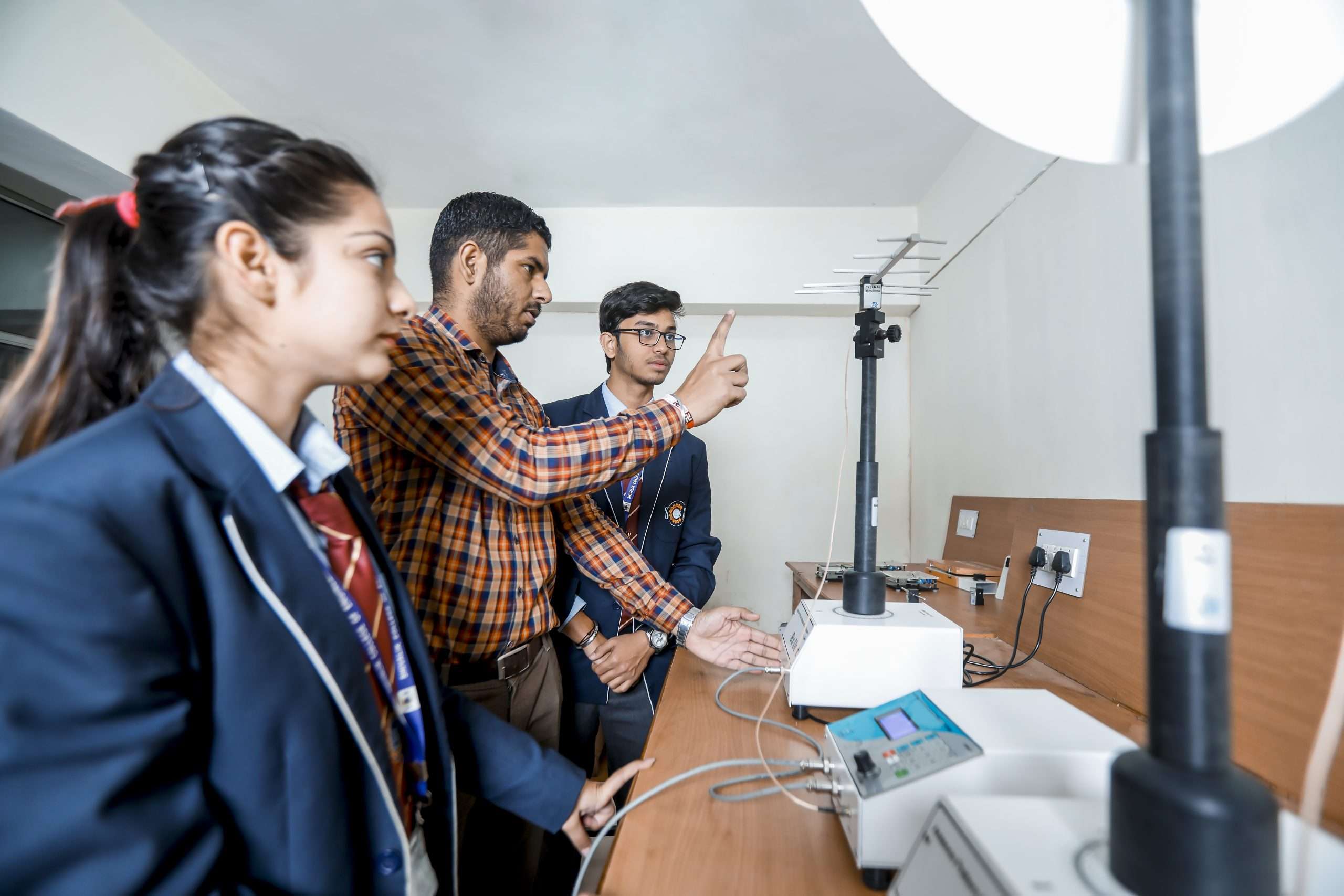
Shivalik College of Engineering is the best ECE colleges in India, offers B.Tech ( Hons ) in Electronics and Communication Engineering. It is a four-years electrical and electronics engineering undergraduate degree program.
Why take this Course?
Electronics and Communication Engineering improves people’s lives and makes them more efficient, and this alone may entice us to pursue this path. This undergraduate course offered at Shivalik College of Engineering promotes critical thinking and market research, both of which are valuable life skills.
Why choose Us?
Progressions & Career
Progression-
Shivalik College of Engineering is one of the best ECE Colleges in India. Here are the attractive opportunities available after B. Tech ( Hons ) In Electronics and Communication Engineering:
Careers
Some of the top job profiles a graduate can get after completing B.Tech ( Hons ) ECE degree includes:
The Shivalik Advantage
Top Recruiters




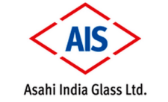

FAQ's
The branches of ECE (Electronics and Communication Engineering) and EEE (Electrical and Electronic Engineering) sound very similar. Many students who are interested in electronics are torn between these two options. Students in EEE must study both electrical and electronic engineering. It is the study and use of electrical systems for use in various environments, and it includes fundamental electronic courses as well as more advanced power system courses.
ECE, on the other hand, mainly deals with analog transmission, basic electronics, solid state devices, microprocessors, digital and analog communication, analog integrated circuits, satellite communication, microwave engineering, antennae and wave progression. The manufacture of electronic devices, circuits, and communications equipment are also discussed in this branch.
Candidates are eligible if they have completed a diploma in Electrical & Electronics Engineering, or Electronics & Communication Engineering. The final admission is decided on the basis of merit and entrance exam score.
Students are given a holistic learning experience and no stone is left unturned in ensuring their professional progress. The Shivalik Computation and Automation Society’s technical events, as well as the ‘Earn While You Learn’ – Internship Program, provide them with the necessary add-on skills and knowledge to face the problems of real life.
Electronics and communication engineering graduates are in high demand and can work in a variety of industries. Multinational companies, healthcare equipment manufacturing, mobile network connection, aviation, corporate business, entrepreneurship, government sector, and other industries such as steel, coal, petroleum, and chemical are all possibilities for an EC engineer.
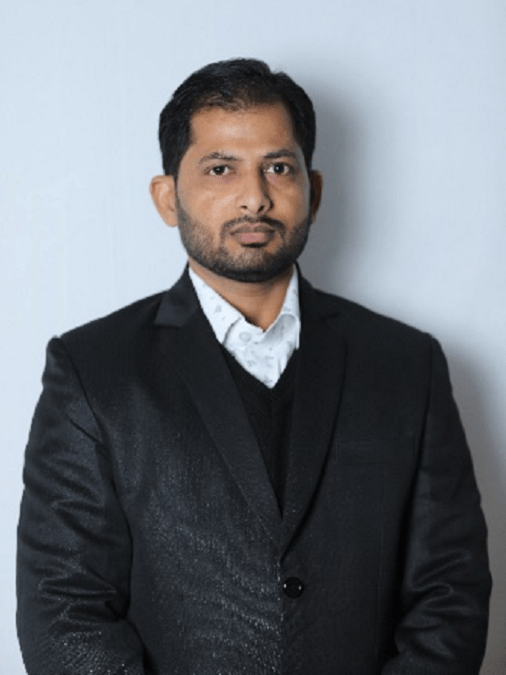
Mr. Ashish Kumar Gupta is currently working as Head of Electronics and Communication Department at Shivalik College of Engineering, Dehradun. He has an experience of 13 years in academics and 1 year in industry. Prior to SCE, he Worked as an Assistant Professor in Department of Electronics and Communication Engineering in Uttranchal University, Dehradun (Uttrakhand), J B Institute of Technology, Dehradun (Uttrakhand) and Dehradun Institute of Technology, Dehradun (Uttrakhand) He has completed bachelor’s degree in Electronics and Communication Engineering in 2009 and Master of Technology in Wireless and Mobile Communication in 2012. His research area is focused on Wireless technologies. He has published more then 10 research articles in international and national journals. He has one patent to his credit.
Contact Info
Program Specific Outcomes and Program Educational Objectives
Engineering knowledge: Apply the knowledge of mathematics, science, engineering fundamentals, and anengineering specialization to the solution of complex engineering problems
Problem analysis: Identify, formulate, review research literature, and analyze complex engineering problems reaching substantiated conclusions using first principles of mathematics, natural sciences, andengineering sciences
Design/development of solutions: Design solutions for complex engineering problems and design system components or processes that meet the specified needs with appropriate consideration for the public health and safety, and the cultural, societal, and environmental considerations.
Conduct investigations of complex problems: Use research-based knowledge and research methods including design of experiments, analysis and interpretation of data, and synthesis of the information toprovide valid conclusions
Modern tool usage: Create, select, and apply appropriate techniques, resources, and modern engineering and IT tools including prediction and modeling to complex engineering activities with an understanding ofthe limitations
The engineer and society: Apply reasoning informed by the contextual knowledge to assess societal, health, safety, legal and cultural issues and the consequent responsibilities relevant to the professionalengineering practice
Environment and sustainability: Understand the impact of the professional engineering solutions insocietal and environmental contexts, and demonstrate the knowledge of, and need for sustainable development
Ethics: Apply ethical principles and commit to professional ethics and responsibilities and norms of theengineering practice
Individual and team work: Function effectively as an individual, and as a member or leader in diverseteams, and in multidisciplinary settings
Communication: Communicate effectively on complex engineering activities with the engineering community and with society at large, such as, being able to comprehend and write effective reports and design documentation, make effective presentations, and give and receive clear instructions.
Project management and finance: Demonstrate knowledge and understanding of the engineering and management principles and apply these to one‘s own work, as a member and leader in a team, to manage projects and in multidisciplinary environments
Life-long learning: Recognize the need for, and have the preparation and ability to engage in independent and life-long learning in the broadest context of technological change.
Apply knowledge of electronics and communication systems containing electronic devices, Software, and hardware to design multidisciplinaryprojects.
Define as well as explain ROBOTICs and Embedded System’s different design technologies, By resolving the various metrics or challenges in designing the system.
Understand the application of electrical and electronics engineering principles in automotive, energy, manufacturing, and transportation industries.
Apply the knowledge of electromagnetic systems, electronic devices, and industrial automation to design, implement, and support industrial instrumentation and control systems.
Facilities
SHIVALIK COLLEGE OF ENGINEERING
| CO Sl.
No |
COURSE OUTCOMES | Mapping of course
outcome with PO and PSO |
|
| PROGRAM – Electronics & Communication Engineering | |||
| BECT 302 Electronic Measurement & Instrumentation | |||
| BECT 302 | CO1- Define the suitable method for measurement of different electronics component and the error associated with them
CO2- Understand the principal operation of different types of meter determine the value unknown parameter with the help of ac and dc bridges. CO3- Understand the working of the various A/D and D/A convertors and display devices CO4- Utilization of CRO in the testing of the circuit CO5- To analyze the key element of signal generator and analyzer CO6- Toanalyze the key element of various type recorder and EEG,EMG,ECG |
PO1, PO2, PO3, PO4, P05, PO6, P07, PO9, P010, PO11, PO12, PSO1, PSO2
|
|
| BECT 303 Digital Electronics | |||
| BECT 303 | CO1- Understand various number systems and logic functions and their application in digital design.
CO2- Illustrate various combinational logic circuits CO3- Design various synchronous sequential logic circuits CO4- Compare different types of logic families which are the base of different types of logic gates in the domain of economy, performance and efficiency. CO5- Determine fault detection techniques for digital logic circuits CO6- Classify different semiconductor memories |
PO1, PO2, PO3, PO4, P05 PO6,PO9, P010, PO11, PO12, PSO1, PSO2 | |
| BECT 304 Electronic Devices | |||
| BECT 304 | CO1-Understand the semiconductors, types, carrier concentration, Thermistor, Hall effect and also to understand the concept of PN junction, I-V Characteristics
CO2- Demonstrate the operating principle and output characteristics of pn junction diodes, zenor diode, Varactor diode, BJT, rectifiers and different diode circuits CO3- Apply different parameters for characterizing different circuits like rectifiers, regulators etc. using diodes CO4- Apply different Biasing methods of BJTs their characteristics and application CO5- Analyze the characteristics of the FET devices and their application. CO6- Analyze the Biasing method of FET for amplifier applications |
PO1, PO2, PO3, PO4, P05 PO6, PO7, P08, PO9, P010 PO11,PO12, PSO1, PSO2 | |
| BEET 305 Network analysis & synthesis | |||
| CO1- Apply the knowledge of basic circuital law and simplify the network using reduction techniques
CO2- Analyze the circuit using Kirchhoff’s law and Network simplification theorems CO3- Infer and evaluate transient response, Steady state response, network functions CO4- Obtain the maximum power transfer to the load , and Analyze the series resonant and parallel resonant circuit CO5- Evaluate two-port network parameters , design attenuators and equalizers CO6- Synthesize one port network using Foster and Cauer Forms. |
PO1, PO2, PO3, PO4, P05, PO6, P07, PO9, P010, PO11, PO12, PSO1, PSO2 | ||
| BECT 402 Signal & System | |||
| BECT 402 | CO1- Describe continuous and discrete time signals, their properties mathematically and operations on dependent as well as independent variables.
CO2- Describe continuous and discrete time systems, their properties mathematically and properties of LTI systems. CO3- Able to understand the Fourier Analysis for both Continuous and Discrete time signals and systems CO4- Able to understand the Laplace and Z-transform for Continuous and Discrete time signals and systems respectively. CO5- Apply the concept of sampling to convert continuous time signal to discrete time signals. CO6- Able to analyze the systems performance using the concepts of various transforms |
PO1, PO2, PO3, PO4, PO5, PSO1, PSO2 | |
| BECT 403 Analog Communication | |||
| BECT 403 | CO1- Illustrate the understanding of signals, types of signals and building blocks of communication systems.
CO2- Compare different amplitude modulation schemes for their efficiency, bandwidth and power saving. CO3- Demonstrate various angle modulation schemes and their applications CO4- Illustrate pulsed modulation system and analyze their system performance. CO5- Explain various multiplexing techniques, line coding techniques and TDM hierarchy CO6- Analyze the behavior of communication systems in the presence of noise. |
PO1, PO2, PO3, PO5, PO10, PSO1, PSO2 | |
| BEET 404 Control System | |||
| CO1- Understand different types of system and identify a set of algebraic equations to represent and model a complicated system into a more simplified form.
CO2- Obtain models of dynamic systems in transfer function and state space forms CO3- Improve the system performance by selecting a suitable controller and/or a compensator for a specific application CO4- Apply and analyze the various control strategies to different applications for the problems faced by society. CO5- Test system Controllability and Observability using state space representation and applications of state space representation to various systems. CO6- Evaluate the system response and stability in both time-domain and frequency domain. |
PO1, PO2, PO3, PO4, P05 PO6, P07, PO9, P010, PO11, PO12, PSO1, PSO2 | ||
| BECT 405 Analog Circuits | |||
| BECT 405 | CO1- Describe the characteristics of diodes and transistors, current mirror circuit.
CO2- Illustrate various amplifier circuits CO3- Apply the functioning of OP-AMP and design OP-AMP based circuits CO4- Analysis and design competence on Opamp RC filters also Design low pass, high pass, band pass and band elimination filter networks CO5- Evaluate the functioning of Generation of square and triangular waveform using OPAMP based a stable multi vibrator CO6- Evaluate the functioning of Generation of square and triangular waveform using IC 555 timer based a stable multi vibrator |
PO1, PO2, PO3, PO4, P05, PO6, P07, PO8, PO9, P010 PO11, PO12, PSO1, PSO2 | |
| BHUT 401 Universal Human Value-2 | |||
| BHUT 401 | CO1- Understand Human values, need and concept in individual’s life
CO2-Analyze the concept of co-existence and evaluate the program to ensure self-regulation CO3- Understand and identify holistic perception of harmony at all levels such as self , family , society and nature CO4- Reshape the concept about different values and discriminate them CO5- Apply professional ethics in future profession and contribute towards building a value based society CO6- Incorporate self-exploration and its application for self evaluation and development. |
PO1, PO3, PO4, P05, PO6, P07, PO8, PO9, P010, PSO1, PSO2 | |
| BECT 501 Microprocessor & Interfacing | |||
| BECT 501 | CO1- Enumerate the Operations of microprocessor, controllers and peripherals.
CO2- Apply knowledge of an advanced element of learning in the field of Microprocessors. CO3- Analyze the processor and controller with peripherals. CO4- Outline the design of Microprocessor based time systems. CO5-llustratethe assembly language programming of processor CO6-Evaluate real time constraints while programming &hardware designing and provide solution to them. |
PO1, PO2, PO3, PO4, PO5, PSO1, PSO2 | |
| BECT 502 Electromagnetic Theory | |||
| BECT 502 | CO1- REMEMBER the basics of vectors and vector calculus.
CO2-UNDERSTANDthe various coordinate systems and the concept of gradient, divergence and curl. CO3-UNDERSTANDbasic principles of electrostatics and magneto statics and use them to find Maxwell’s equations. CO4-APPLY the principles of dynamic field to find the modification in Maxwell’s equations. CO5-APPLY the Maxwell’s equation in obtaining the wave equations and solve plane wave propagation in various conditions CO6- ANALYZE the transmission line equation and apply it in various possible conditions |
PO1, PO2, PO3, PO4, P05, PO6, P07, PO8, PO9, P010, PO11, PO12, PSO1, PSO2 | |
| BECT 503 VLSI Technology and Design | |||
| BECT 503 | CO1- The basics of analog electronics devices and digital electronics devices.
CO2- Understand the different fabrication steps for the crystal growth. CO3- Solve the various parameters explaining the electrical & device modeling parameters. CO4- Illustrate the working of PMOS, NMOS and CMOS, their electrical properties and design gates with them. CO5- Solve the parameters like power dissipation, timing issues etc for the combinational, sequential circuits and memories. CO6- Analyze the various ASIC’s circuits like PLA’s, CPLD’s, FPGA’s and their design and testing tools. |
PO1, PO2, PO3, PO4, PO5 PO9, PO11, PO12, PSO1, PSO2 | |
| BECT 504 (B) Data Communication and Networks | |||
| BECT 504 (B) | CO1- Understand and describe about the working of Computer Networks
CO2- Illustrate reference models with layers, protocols and interfaces CO3- Model the LAN and WAN configuration using different media. CO4-Examine problems of a computer networks. CO5- Test networks to verify connectivity and operational status CO6- Design safe and secure computer networks |
PO1, PO2, PO3, PO4, PO5, PO6, PO7, PO9, PO10, PO11, PO12, PSO1, PSO2 | |
| BOEC 505 (B) Computer system Organization | |||
| BOEC 505 (B) | CO1- Understand the functional units of processor and the factors affecting the performance of a computer.
CO2-Analyze the effect of addressing modes on the execution time of a program. CO3- Understand the computer arithmetic and design algorithms for various operations. CO4- Implement the basic knowledge of I/O devices and interfacing of I/O devices with computer. CO5- Analyze the CPU design including the RISC/CISC architectures. CO6- Apply pipeline and Vector processing in designing Different Structure of computer communication. |
PO1, PO2, PO3,PO4, PO6, PO7,PO10, PO11, PO12, PSO1, PSO2 | |
| BECT 601 Digital signal Processing | |||
| BECT 601 | CO1- Remember the concept of Discrete time signals and systems along with the Z-transform basics.
CO2- Understand the concepts of Discrete Fourier Transform. CO3- Understand the concepts of FFT algorithms for efficient computation of DFT. CO4- Apply the concepts of system analysis and realization to make : design IIR Filters CO5- Apply the concepts of system analysis and realization to make : design FIR Filters CO6- Remember the concept of Discrete time signals and systems along with the Z-transform basics. |
PO1, PO2, PO3, PO4, PO5, PSO1, PSO2 | |
| BECT 602 Antenna and Wave Propagation | |||
| BECT 602 | CO1- Define various antenna parameters
CO2- Illustrate techniques for antenna parameter measurements. CO3- Analyze radiation patterns of antennas CO4- Apply various applications of antennas CO5- R apply the concept of radio wave propagation CO6- Evaluate antennas for given specifications |
PO1, PO2, PO3, PO4, PO5, PO6, PO7, PO8, PO9,PO10, PO11, PO12 PSO1, PSO2 | |
| BECT 603 Digital Communication | |||
| BECT 603 | CO1- Remember the basics of Communication processes emphasizing on baseband signal modeling
CO2- Illustrate the typical source coding techniques and calculate Entropy of source. CO3- Understand the generation, detection signal space diagram, spectrum, bandwidth efficiency, and probability of error analysis of different band pass modulation techniques. CO4- Determine the performance of different error control coding |
PO1, PO2, PO3, PO4, PSO1, PSO2 | |
| schemes for the reliable transmission over the channel
CO5- Illustrate various spreading techniques and determine bit error performance of various digital communication systems. CO6- Analyze the design of matched filter receiver for optimum performance |
|||
| BECT 604 (B) CMOS Design | |||
| BECT 604 (B) | CO1-Describe the VLSI design flow, basic theory of MOS transistors, basic steps of fabrication of NMOS & CMOS Process.
CO2-Illustrate Characterizing equation of synchronous sequential machine and Mealy and Moore model machines state table and transition diagram CO3-Apply the functioning of CMOS in Logic and Combinational circuits. CO4-Analysis and Design of the asynchronous sequential machine, analyze the performance of CMOS Inverter circuits on the basis of their operation and working. CO5-Evaluate strategies for testing of MOS and BJT Models. |
PO1, PO2, PO3, PO4, PO5, PO6, PSO1, PSO2 | |
| BOEC 605 (D) IoT and Applications | |||
| BOEC
605 (D) |
CO1-Describe the definition and significance of IoT
CO2-Illustrate Characteristics of IoT and communication models CO3-Apply the functioning of Iot in Network & Communication. CO4-Analysis the various challenges in IoT. CO5-Evaluate IoTs utilization in different applications of IoT technologies in practical domains of society |
PO1, PO2, PO3, PO4, PO5, PO6, PO10, PSO1, PSO2 | |
| BECT 701 Microwave Engineering | |||
| BECT
701 |
CO1- REMEMBER the basics of vectors and vector calculus.
CO2- UNDERSTAND the various coordinate systems and the concept of gradient, divergence and curl. CO3- UNDERSTAND basic principles of electrostatics and magneto statics and use them to find Maxwell’s equations. CO4- APPLIES the principles of dynamic field to find the modification in Maxwell’s equations. CO5- APPLY the Maxwell’s equation in obtaining the wave equations and solve plane wave propagation in various conditions CO6- ANALYZE the transmission line equation and apply it in various possible conditions. |
PO1, PO2, PO3, PO4, PO5,PO6,PO7, PO8, PO9, PO10, PO11, PO12, PSO1, PSO2 | |
| BECT 702 Optical Fiber Communication | |||
| BECT
702 |
CO1- Recognize and classify the structures of Optical fiber and types
CO2- Classify the Optical sources and detectors and to discuss their principle. CO3- Discuss the channel impairments like losses and dispersion. CO4- Analyze various coupling losses CO5- Familiar with Design considerations of fiber optic systems CO6- To perform characteristics of optical fiber, sources and detectors. |
PO1, PO2, PO3, PO4, PO5, PO6, PO7, PO9, PO10, PO11, PO12, PSO1, PSO2 | |
| BECT 703 (B) Digital Image Processing | |||
| BECT
703 (B |
CO1-REMEMBER the basics of visual perception and color models, image formation, sampling quantization.
CO2-UNDERSTAND the steps involved in digital image processing systems. CO3-UNDERSTAND the various domains for image processing and make necessary noise models. CO4-APPLY the steps like enhancement on the images. CO5-APPLY segmentation on the images Using Morphological Watersheds. Representation CO6-ANALYZE the complex video processing techniques like MPEG4 nad H.26X |
PO1, PO2, PO3, PO4, PO5, PO6, PO7, PO10, PO12, PSO1, PSO2 | |
| BOEC 704 (B) Artificial Intelligence | |||
| BOEC
704 (B |
CO1- Demonstrate fundamental understanding of the history of artificial intelligence (AI) and its foundations
CO2- Apply basic principles of AI in solutions that require problem solving, inference, perception, knowledge representation, and learning. CO3- Demonstrate awareness and a fundamental understanding of various applications of AI techniques in intelligent agents, expert systems, artificial neural networks and other machine learning models CO4- Demonstrate proficiency developing applications in an ‘AI language’, expert system shell, or data mining too CO5- Demonstrate proficiency in applying scientific method to models of machine learning. CO6- Able to understand and develop expert systems for any real time application |
PO1, PO2, PO3, PO4, PO5, PO6, PO7, PO11, PSO1, PSO2 | |
| BECT 801 Television and Radar Engineering | |||
| BECT
801 |
CO1- Define various television basic principle, standards and television Pick-up devices and Cameras.
CO2- Illustrate techniques for Television transmission and reception. CO3- Illustrate various Digital Television Technology CO4- Apply performance factors CO5- Apply the concept of Radar receiver CO6- Apply the concept of Radar Receiver in Other Radar systems |
PO1, PO2, PO3, PO4, PO6,PO7, PO8,PO9,PO10, PO11,PO12 PSO1, PSO2 | |
| BECT 802 Wireless Communication | |||
| BECT
802 |
CO1- Relation with the basics of communication learned in different engineering subjects.
CO2- Compare the fundamentals learnt in previous communication subject with the wireless propagation mechanisms and channel classification learned here CO3- Apply the learnt mechanisms and previous knowledge in demonstrating the various modulation techniques in selecting the wireless communication transceivers. CO4- Analyze the different diversity techniques and illustrate them in different signal processing units of wireless communication systems problems CO5- Classify the basics of Channel coding schemes and speech coding technique and examine them for wireless communication systems CO6- Formulate the different advance level multiple access schemes and application of different multiplexing schemes in advance transceiver schemes and its applications. |
PO1, PO2, PO3, PO4,PO5,PO7, PO12, PSO1, PSO2 | |
| EC 803 (A) Digital System Design using VHDL | |||
| EC 803
(A) |
CO1-Describe the model, simulate, verify, and synthesize with hardware description languages.
CO2-Illustrate the concept of state machine SM charts using microprogramming. CO3-Apply the VHDL in PLDs and Field Programmable Logic Arrays (FPGAs). CO4-Analysis of the combinational logic circuit using VHDL code. CO5-Evaluate the functioning of the Digital system using VHDL code. |
PO1,PO2,PO3,PO4,PO5,PO6,PO11, PSO1, PSO2 | |
| BOEC 804 (B) Machine Learning | |||
| BOEC
804 (B) |
CO1- Learn the basics of learning problems with hypothesis and version spaces
CO2- Understand the features of machine learning to apply on real world problems CO3- Characterize the machine learning algorithms as supervised learning and unsupervised learning and Apply and analyze the various algorithms of supervised and unsupervised learning CO4- Design and apply various reinforcement algorithms to solve real time complex problems. CO5- Demonstrate proficiency in applying scientific method to models of machine learning. CO6- Understand the basic concepts of deep neural network model and design the same. |
PO1,PO2,PO3, PO4,PO5,PO9, PO10,PSO1, PSO2 | |
Vision & Mission
Vision of the Department
The department of Electronics and Communication Engineering endeavors to nurture Engineering Technocrats with good academics, creativity, ethical and human values to serve as a valuable resource for the industry and the society at large.
Mission of Department
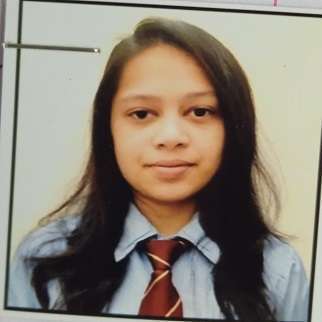 Ishika Jain
B.tech ECE | 3rd Year
Ishika Jain
B.tech ECE | 3rd Year
My bachelor degree at Shivalik college of Engineering in electronics and communications consisted of many projects. Based on education the mentor at Shivalik College of Engineering help me to enhance my academic and interpersonal skills.
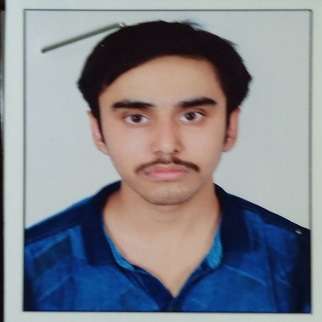 Arsh Singhal
B.tech ECE 3rd year
Arsh Singhal
B.tech ECE 3rd year
The department of Electronics offers finest in class tools to help one develop critical and logical thinking skills for the benefit of future. The world depends on electronics whether it’s smartphones, laptops or any other device you can think off. I as a student programmer at Shivalik college of Engineering adored creating code for machines to communicate with one another in real time. all this have been possible just because of studying at Shivalik college.
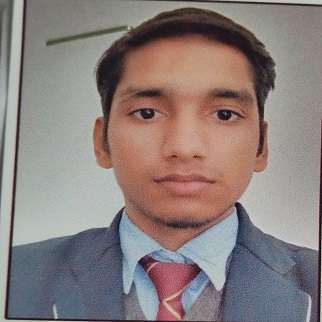 Pawan A Keshwal
B.tech ECE | 3rd Year
Pawan A Keshwal
B.tech ECE | 3rd Year
Shivalik college of Engineering offers several courses one of them is BTech in ECE field. In every semester Industries such as BHEL BSNL etc and workshop such as Iot, matlab and Drone Technology organised by ECE department for the students. ECE faculty members also focuses about the latest advancements in technology such as in Artificial intelligence, machine learning and Iot so that students are updated about the technology required as per the industrial requirement. Overall ECE is an exciting and dynamic field that offers vast career opportunities for those interested in technology and Engineering